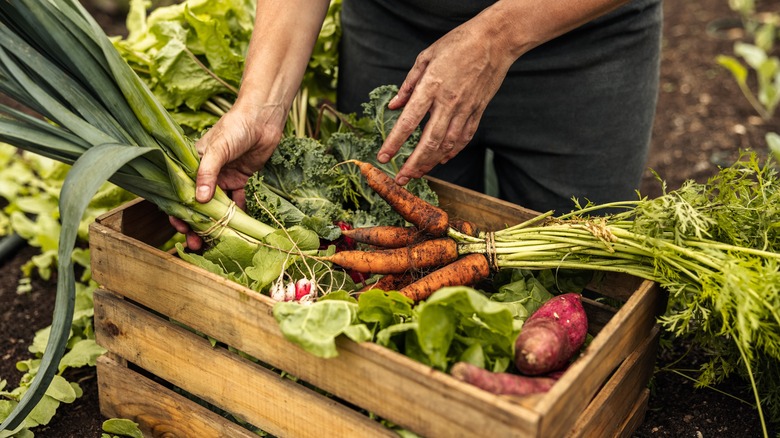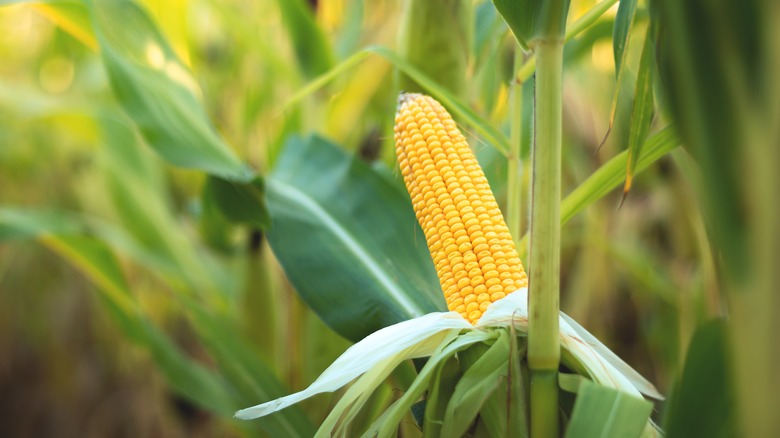New Data Shows Organic Crops Are On The Rise, But There's A Catch
By now, there's probably a good chance you've given organic grocery stores like Trader Joe's or Sprouts a visit. In 2022, worldwide organic food sales hit a whopping $120.65 billion (per Statista). In the U.S. alone, 46% of consumers opted for organic milk. There's a reason why organic food sales have seen a consistent year-over-year increase. The Organic Trade Association calls 2020 an "unprecedented year" for organic food sales due to waves of consumer demand following extended shortages and pandemic-induced stockpiling. Then, in 2021, CNBC reported that organic food sales saw a 12.4% increase from 2020 to $61.9 billion. Why? The news outlet cites a study from Pew Research that found today's consumers opt for organic products for several reasons: 76% bought organic for its health factor, 33% bought for environmental sustainability reasons, and 22% said buying organic was simply more convenient.
According to data collected by the Acreage Analyzer tool from Mercaris, an online trading platform and market service for organic goods, organic food demand is continuing to grow. In a report released earlier this week, via Food Business News, Mercaris announced that organic crops are still on the rise — but, this year, there's a catch. Here's what it means for farmers.
More organic crops are being planted, but on less and less farmland
While organic food sales continue to rise yearly, the total number of U.S. acres dedicated to organic production has declined. Farmland that has been certified as organic by the U.S. Department of Agriculture (USDA) is expected to see a massive drop in 2022. Per the new data, via Food Business News, acreage of U.S. farmland dedicated to growing certified-organic wheat is expected to decrease by 1% this year — and corn acres are dropping by 2%.
Per Food Business News, the U.S. is currently home to around 20,000 organic farms accounting for 8.7 million acres of organic farmland, compared to 9.1 million acres in 2021. That's a 4.4% drop, and, while this might not seem like a huge figure, its implications are important. More organic crops are being planted, but there is less and less organic wheat for livestock to feed on.
Luckily, it looks like the USDA is trying to combat it. Via an August 2022 press release, the USDA announced its new $300 million New Organic Transition, which is attempting to make organic farms the norm by helping farmers with the costs of becoming certified. The Organic Trade Association remains similarly optimistic. The association stated, "Organic's ability to retain the market footholds gained during 2020 and continue to grow despite unprecedented challenges and uncertainty is a testament to the strength of the industry and its products." Time will tell what the future holds for organic farming.

